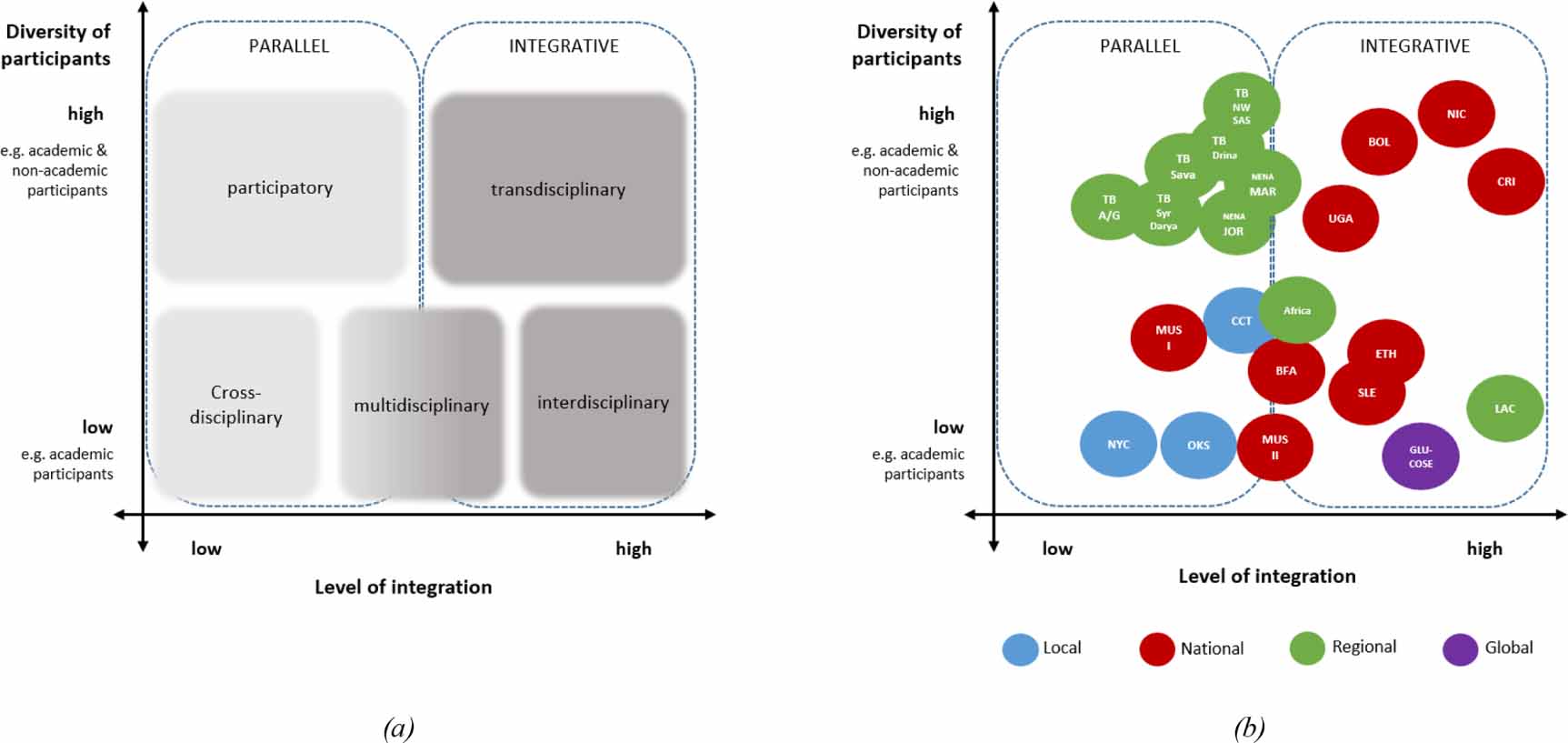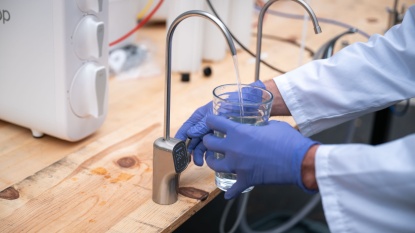Transboundary water cooperation creates a ripple effect in South East Europe – IAEA

Enhancing Transboundary Water Management through Isotope Hydrology in Support of Sustainable Development Goals
Project Overview and Alignment with Global Goals
A regional technical cooperation project, initiated by the International Atomic Energy Agency (IAEA) in 2020, has advanced the sustainable management of a shared karst aquifer between Bosnia and Herzegovina and Montenegro. This initiative directly supports several Sustainable Development Goals (SDGs) by addressing critical challenges in water security, climate action, and international cooperation.
- SDG 6 (Clean Water and Sanitation): The project’s core objective is to improve the understanding and management of the Oko-Bijela Gora karst aquifer, a vital source of drinking water, thereby ensuring the availability and sustainable management of water.
- SDG 13 (Climate Action): A primary aim was to study the influence of climate change on groundwater resources, providing essential data for developing climate-resilient water policies.
- SDG 17 (Partnerships for the Goals): The project exemplifies a successful partnership, involving 27 countries across Europe and Central Asia, to build capacity and foster collaborative solutions for transboundary resource management.
Methodology and Capacity Building for Sustainable Management
To address a previous lack of hydrological data, the project focused on building local expertise and applying advanced scientific techniques. The IAEA facilitated a comprehensive program to empower regional water specialists.
- Training and Knowledge Transfer: Specialists from both nations received training in advanced isotopic analysis techniques for water sampling, calculating recharge rates, and developing regional water cycle models. This was achieved through fellowships, scientific visits, and regional meetings.
- Equipment and Fieldwork: The IAEA provided essential equipment and supplies for extensive fieldwork and laboratory analysis. Scientists collected precipitation, groundwater, and surface water samples for isotopic study.
- Data Integration and Modeling: Isotopic analysis findings were combined with historical hydrological and meteorological data to determine the conditions for the aquifer’s recharge and understand its hydrogeological cycle.
Key Outcomes and Contributions to the 2030 Agenda
The project yielded the first conceptual model of the Oko-Bijela Gora aquifer, providing a scientific blueprint for sustainable policy-making. The outcomes represent significant progress toward achieving specific development targets.
- Informing Water Policy (SDG 6): The development of models and maps identifying groundwater recharge areas provides a robust foundation for a joint water resource management policy. This is critical for protecting the shared aquifer from contamination and overuse.
- Supporting Clean Energy (SDG 7): By clarifying the aquifer’s sustainability, the research supports the long-term viability of hydropower generation, a key source of affordable and clean energy in the region.
- Strengthening Regional Cooperation (SDG 17): The project successfully established a regional network of experts and demonstrated that isotope hydrology is an indispensable tool for managing transboundary karst systems. As noted by Dragan Radojević, Head of the Department for Hydrogeology at the Geological Survey of Montenegro, this collaboration “strengthens mutual understanding and supports the sustainable management of this vulnerable karst system.”
Analysis of SDGs, Targets, and Indicators
1. Which SDGs are addressed or connected to the issues highlighted in the article?
The article highlights issues and initiatives that are directly connected to several Sustainable Development Goals. The analysis identifies the following SDGs as relevant:
- SDG 6: Clean Water and Sanitation – The core focus of the article is the study and sustainable management of a karst aquifer, a critical source of fresh water.
- SDG 13: Climate Action – The project described was specifically initiated to study how climate change influences groundwater resources, which is a key aspect of climate adaptation.
- SDG 17: Partnerships for the Goals – The initiative is a multi-country regional technical cooperation project facilitated by the IAEA, demonstrating a clear partnership to achieve common goals.
- SDG 9: Industry, Innovation, and Infrastructure – The project involves the application of advanced scientific techniques (isotope hydrology) and the development of new models and maps, enhancing scientific research and technological capacity.
2. What specific targets under those SDGs can be identified based on the article’s content?
Based on the article’s content, the following specific targets can be identified under the relevant SDGs:
- Under SDG 6 (Clean Water and Sanitation):
- Target 6.5: By 2030, implement integrated water resources management at all levels, including through transboundary cooperation as appropriate. The article is centered on a project where “Hydrologists from Bosnia and Herzegovina and Montenegro worked together to develop the first conceptual model of the Oko-Bijela Gora karst aquifer,” a shared resource. This collaboration is a direct implementation of transboundary cooperation for water management.
- Under SDG 13 (Climate Action):
- Target 13.3: Improve education, awareness-raising and human and institutional capacity on climate change mitigation, adaptation, impact reduction and early warning. The project’s aim was to “train water specialists in the latest techniques” and help them deepen their “knowledge of climate change scenarios.” This directly builds human and institutional capacity to address the impacts of climate change on water.
- Under SDG 17 (Partnerships for the Goals):
- Target 17.6: Enhance North-South, South-South and triangular regional and international cooperation on and access to science, technology and innovation. The article describes an “IAEA regional technical cooperation project” involving “25 others [countries] across Europe and Central Asia,” which is a clear example of international cooperation on science (isotope hydrology).
- Target 17.9: Enhance international support for implementing effective and targeted capacity-building in developing countries. The project provided “equipment and supplies for fieldwork and laboratory analysis and training in isotope analysis,” which is a form of targeted capacity-building supported by an international organization (IAEA).
- Under SDG 9 (Industry, Innovation, and Infrastructure):
- Target 9.5: Enhance scientific research, upgrade the technological capabilities of industrial sectors in all countries…encouraging innovation. The article states that the project was “the first to use isotopic techniques to investigate transboundary groundwater” in the region and that it “demonstrated that isotope hydrology is an important tool.” This represents an enhancement of scientific research and the introduction of innovative techniques.
3. Are there any indicators mentioned or implied in the article that can be used to measure progress towards the identified targets?
The article implies several qualitative and quantitative indicators that can be used to measure progress:
- For Target 6.5: The development of the “first conceptual model of the Oko-Bijela Gora karst aquifer” and the creation of a “blueprint for a water resource management policy” serve as indicators of progress towards an operational arrangement for water cooperation (related to indicator 6.5.2). The joint project itself is a primary indicator of ongoing transboundary cooperation.
- For Target 13.3: The formation of a “regional network of experts with the skills and equipment to monitor and evaluate water resources” is a clear indicator of strengthened human and institutional capacity. The number of “water specialists” trained through the project is another measurable indicator.
- For Target 17.6: The existence of the “IAEA regional technical cooperation project” itself serves as a direct indicator of a science and technology cooperation program between countries (related to indicator 17.6.1).
- For Target 9.5: The successful application of isotopic techniques for the first time in the region and the development of “models and maps to identify groundwater recharge areas” are indicators of enhanced scientific research capabilities.
4. Summary Table of SDGs, Targets, and Indicators
| SDGs | Targets | Indicators (Identified or Implied in the Article) |
|---|---|---|
| SDG 6: Clean Water and Sanitation | 6.5: Implement integrated water resources management, including through transboundary cooperation. | Development of a joint conceptual model and a blueprint for a shared water resource management policy between Bosnia and Herzegovina and Montenegro. |
| SDG 13: Climate Action | 13.3: Improve education, awareness-raising and human and institutional capacity on climate change. | Training of water specialists on climate change scenarios; formation of a regional network of experts with skills to monitor water resources. |
| SDG 17: Partnerships for the Goals | 17.6: Enhance regional and international cooperation on science, technology and innovation.
17.9: Enhance international support for targeted capacity-building. |
The existence of the IAEA regional technical cooperation project involving 27 countries.
Provision of equipment, supplies, and training by the IAEA to national scientists. |
| SDG 9: Industry, Innovation, and Infrastructure | 9.5: Enhance scientific research and upgrade technological capabilities. | The first-time use of isotopic techniques in the region for transboundary water management; development of new models and maps for the aquifer. |
Source: iaea.org

What is Your Reaction?
 Like
0
Like
0
 Dislike
0
Dislike
0
 Love
0
Love
0
 Funny
0
Funny
0
 Angry
0
Angry
0
 Sad
0
Sad
0
 Wow
0
Wow
0








































































